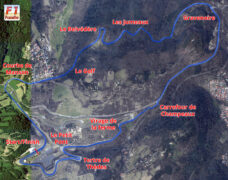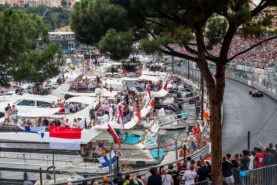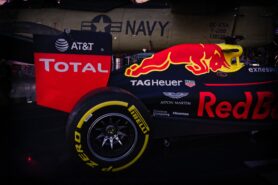Lost Iconic Circuits That Have Graced F1

Formula 1 is very much a sport about looking forward. About innovation and invention. While that is what continues to drive it on, it should not forget its past, the people, places and events that made it what it is today. The globe and the history of F1 is littered with tracks that in their day were every bit as revolutionary and loved as the ones we flock to today, but that have, for whatever reason, faded into the mists of time. Here we’ll look at just a few of those.
Lwów
The Polish Grand Prix was held at this circuit between 1930 and 1933. Poland has always been on the periphery of the F1 scene, only ever having one driver - Robert Józef Kubica - but the continued popularity of sporty motorowe formula 1 online shows just how big the sport is in the country. It is sad therefore that its only F1 circuit is not only not used for Formula One anymore but is actually not even in Poland anymore. After multiple border changes Lviv – as it is known as today – is in Ukraine. The street circuit, devised before Monaco, was, during its brief stint widely considered to be one of the finest around.
Circuit de Charade
Its name makes it seem like it belongs in a comedy, while the fact it is built around an extinct volcano, places it more in the adventure genre. Either way, the Circuit Clermont-Ferrand to give it is unofficial but more popular name was a favourite with spectators during the late 1960s and 1970s when it hosted the French GP. Hailed as even more challenging and twisty than the Nürburgring, the five-mile track was also very fast and posed a huge test of a driver’s abilities, not to mention their stomachs, many of whom wore open helmets in case of motion sickness induced by the bends.
The location was to be the circuit’s downfall, however. The sharp volcanic rocks would continually litter the apron and even the track causing numerous punctures and other safety concerns, and it fell out of favour, the Paul Ricard Circuit taking its place on the calendar.
Brands Hatch
This much-lovedtrack located in Kent in England only hosted 12 British Grand Prix, but its place in the hearts of all Formula One fans, at least those of a certain age, suggests it did, and perhaps should have hosted many more. It was the location of some iconic races and battles, including the 1968’s duel between Jo Siffert and Chris Amon, as well as the place Nigel Mansell secured his first F1 victory in 1985. The shortness of the track (it is less than 2.5 miles long) and the narrowness of many of its stretches just don’t make it suitable for modern F1 racing, and coupled with the presence of Silverstone mean it will in all likelihood only remain a fixture on the UK race scene outside of Formula One.
Imola
A circuit remembered for as many wrong reasons as for good, but one that carved its name into the F1 history books time and time again. Ayrton Senna and Roland Ratzenberger tragically died in the 1994 GP, but it was also home to some of the most thrilling and dramatic races in living memory, including the epic tussles between Fernando Alonso and Michael Schumacher in successive years 2005 and 2006. That last race was the final time the Autodromo Internazionale Enzo e Dino Ferrari, to five the track its official name, graced the Formula One calendar. Like many that have fallen out of favour with the F1 hierarchy, it is safety standards and concerns and the increased demands put upon tracks by the new cars that have done for the Imola, and though it remains in use, it is doubtful F1 fans will witness another race there.
✅ Check out more posts with related topics:














